With a day off of duties from the school, I had an excellent and productive session in my own shop. Some doug fir boards I brought from my valley in Oregon have been acclimating in my shop this whole time, and since my bench is made of the same stuff, I figured the shelves should be too. Also, how else would I use this knotty, splintery stuff?
I first utilized the space-age miracle of my thickness planer (an electronic machine, do not judge me). This was to quickly take the boards down to 3/4" thick. They were just nasty enough that this dimension was not quite enough to hit every spot of rough-sawn gnar, but this was fine since I would finish by hand. The dimension was solely so that the tongue-and-groove plane would have a consistent thickness to register from (as it is intended for 3/4" boards).
Here is a board after machine planing:
The next order of business was to joint a side using a (you guessed it) jointer plane. To be honest, at this point I would love to have a power jointer and would have used one without guilt, but I did it the old fashioned way, a la this:
You might notice knots, reversing grain, and other defects which would cause this board to be rejected by a well-intentioned furniture maker. Given the nature of this project, however, I just kept rolling with it. It is just shelves for a workbench. This did come back to haunt me.
Here is one of the tongue edges just about complete. The plane heats up rapidly while doing this, and waxing it often is helpful. This is a very specialize plane which only does this one thing, but it does it so well that it is mind-blowing. Not sure it is "worth it" or how many feet I will have to produce to have it pay for itself, but it really is a fun and amazing tool:
A quick switch of the fence and it makes the groove which matches perfectly. That said, this machine is no more automatic than a shoulder or rabbet plane. It takes a bit of attention, skill, and selective pressure to yield a good result. It does not like knots or reversing grain. It does help to wax not only the plane, but the board as well. It of course likes to be sharp. Doug fir is forgiving on clean stretches, and brutal on the reversing stretches. Somewhere in here, I added suede to the vise chop, which helped a great deal. In fact, I would consider this mandatory.
This is my tongue and groove plane doing its thing. This is a premium replica. I have also used a Stanley 45, which is great but much more of a pain to set up. Again, this is a hard to justify tool, but if you have one, you will love it. Except for the fact that you are committed to one dimension... and I suppose a bit of skill with rabbets would liberate you.
It is important to stop every so often to dry fit. This is not just to make sure that nothing is critically astray, but in fact just to make it seem fun and feel like you are getting somewhere:
Here is the stack of completed T&G board, awaiting face planing/smoothing. I number them because I am a dolt and mess things up a lot if I do not over-label. I only mess them up a bit if I do it:
And the boards installed after smoothing:
The next order of business was to shape the sliding deadman. I laid it out using curves from an offcut of a walnut rocking chair I saved from stock preparation at the school. No idea what its radius is but I assume it is pretty legit since it is a Maloof inspired rocker.
Since I do not have a bandsaw, or even a spokeshave, I kerfed the basic design with a crosscut saw:
and then attacked it with a chisel:
This is a technique I have really grown to love since using it for my English Layout Square (more soon on that). It has limitations, but is fast and fun. All those cube-like chips you see laying on the bench pop out with an immediate tap, usually flying up just enough to be exciting but not enough to be dangerous or haphazard.
Around this time, my main priority arrived home. I set up her frog-pattern folding chair and had her watch for a bit. Eventually, she wanted to sit on top of the toolchest. I had to make sure I had all I needed out of it, and then let her actually lay down on it. She was not content to be so passive for long, though, and needed a task, so I taught her how to consolidate shavings which she considered "playin' workin".
This sufficiently moved me such that I wanted to provide some deeper skill building. I tacked up a little strip of pine on one of the sawbenches, and gave her the smallest plane I had. After a few minutes of hand-holding, she was doing it on her own, making tiny tiny shavings.
I finally got back to shaping the deadman, and I just have to shrug at the unfair shape, doing what I can with a blockplane and chisel. Maybe someday I will sculpt it with a spokeshave, or maybe not. All it really has to do is hold pegs, which it already does:
It was a good day.
Soon: planing stop and mortise, inset vise, and maybe then I will finally pronounce this thing DONE and get back to actual "woodworking".


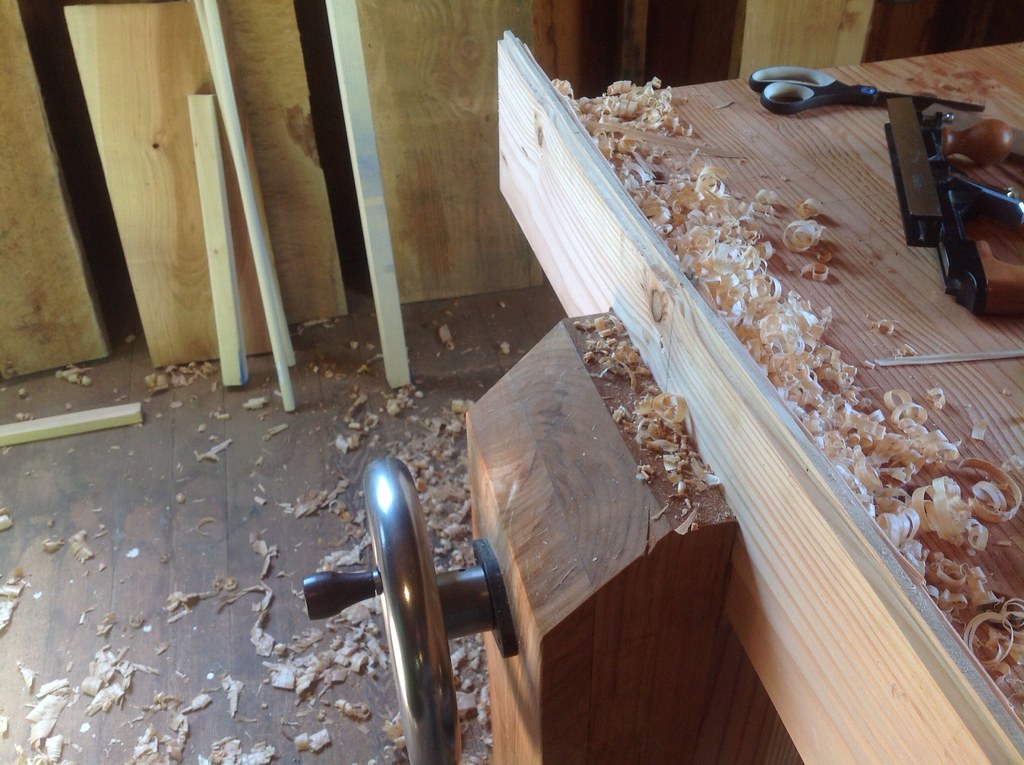



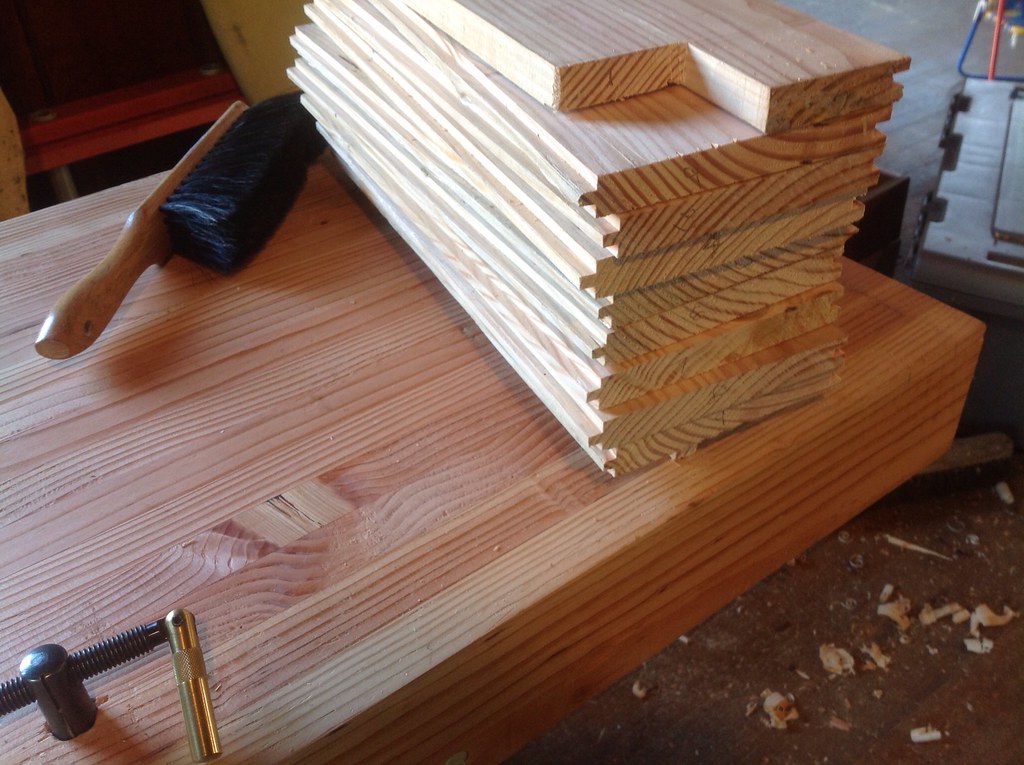

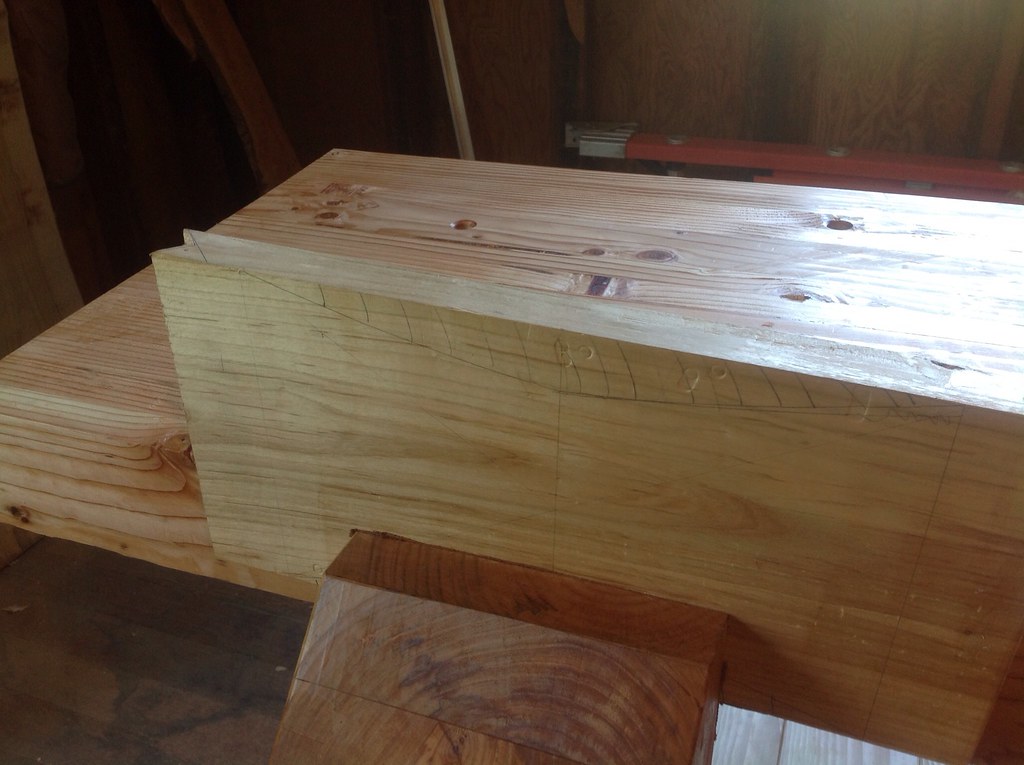

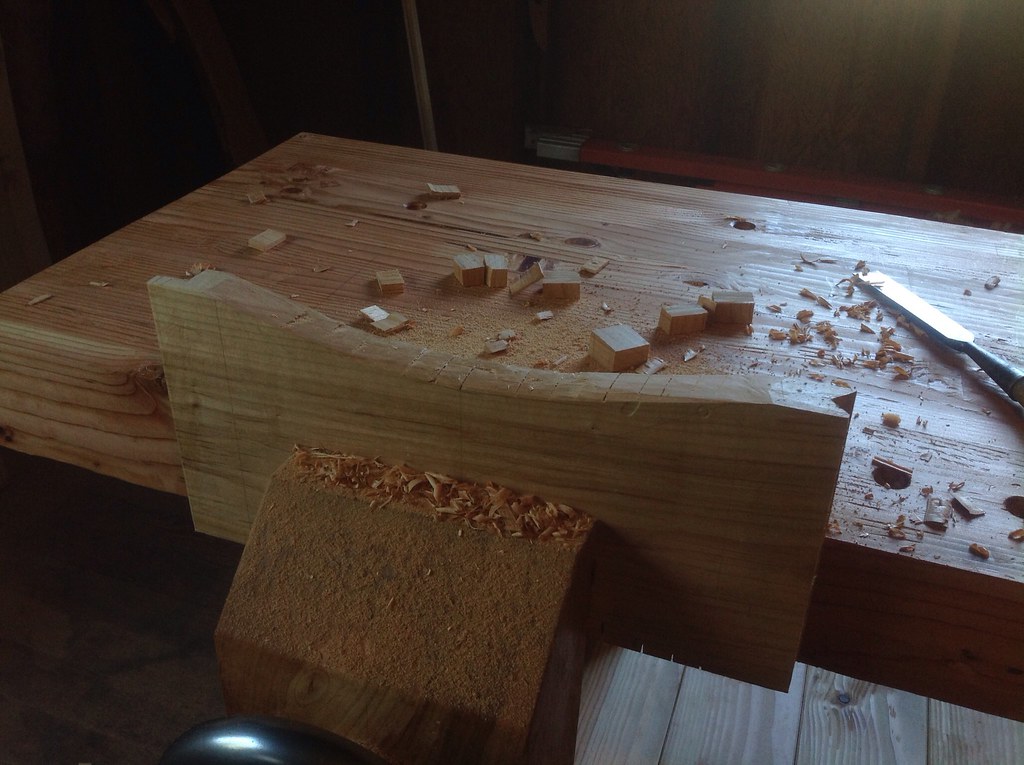

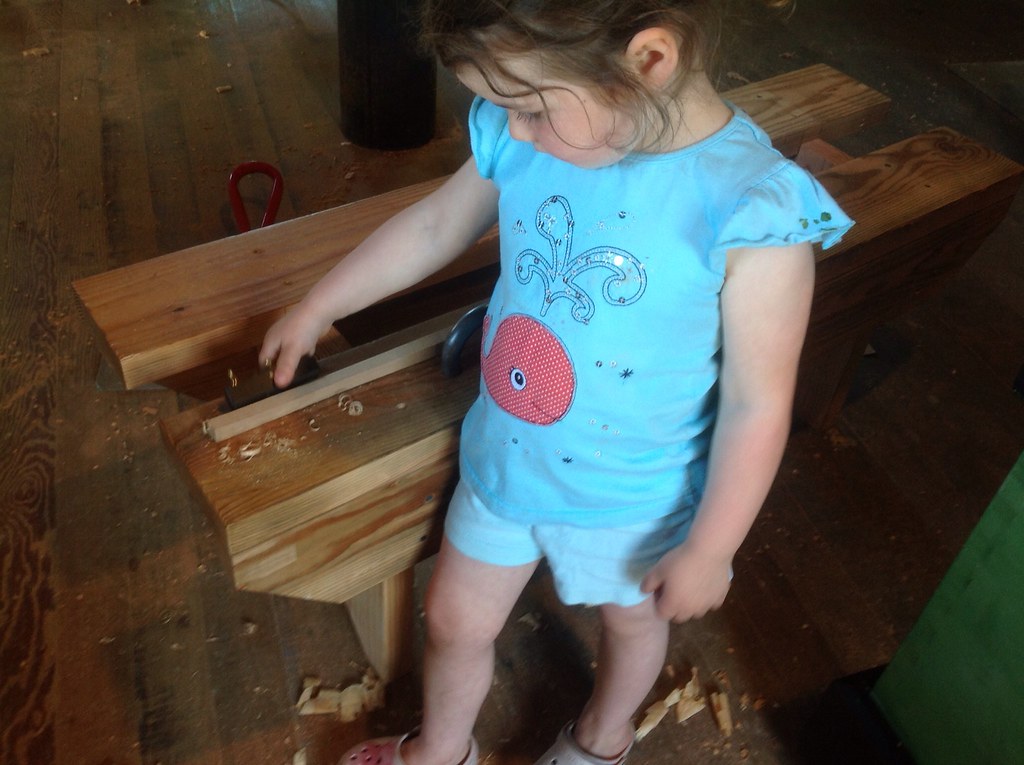
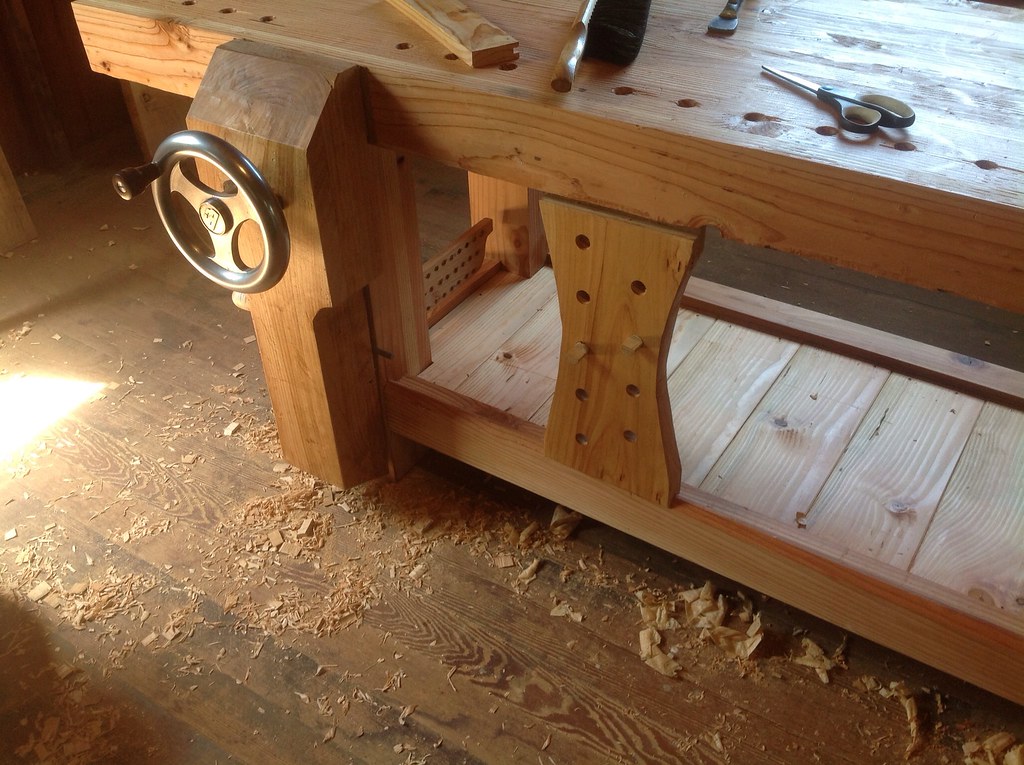
I am a little surprised that you have a T&G plane, but not a spokeshave. Are you avoiding that purchase for some reason?
ReplyDeleteTheodore, good question. The T&G plane was a gift. I have not been doing much round or sculptural work so the spokeshave has been a lower priority. I've had access to all kinds of them at the school, but still don't have one at home and didn't think this was worth borrowing one.
ReplyDelete